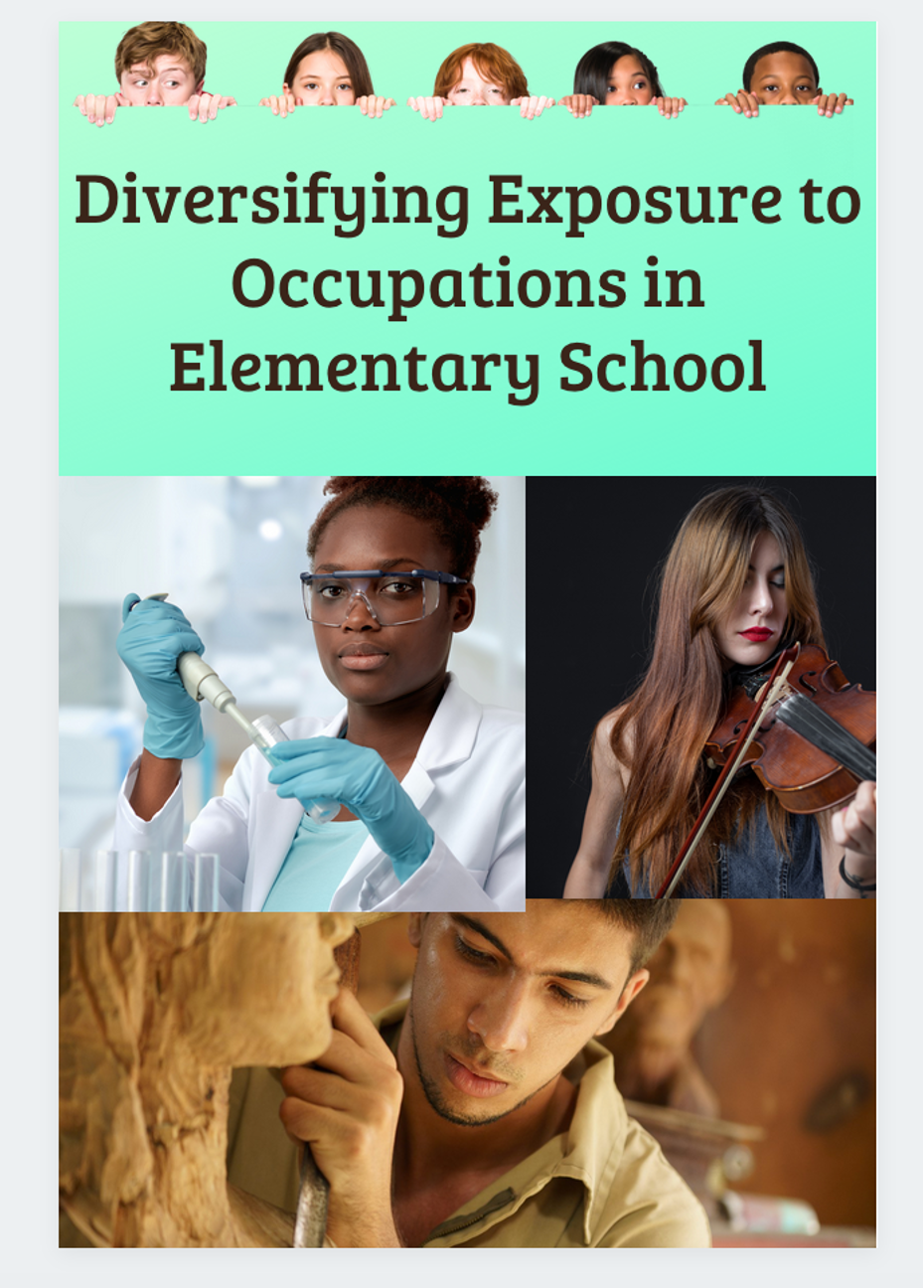Diversifying Exposure to Occupations in Elementary School
Diversifying Exposure to Occupations in Elementary School
by Cecilia Voetsch, Efe Shavers, Sara Langtry and Kimberly A.S. Howard
Have you ever heard of an ornithologist? Don’t worry we hadn’t either. In school, many of us might have been introduced to a wide array of occupations such as doctors, lawyers, even engineers. But, there are so many more fields to explore; the possibilities are almost endless. In our work with elementary school counselors, we have found that they routinely introduce unique and interesting jobs to their students as a way of encouraging excitement about possible future occupations. They invite community members to describe their work, share what they like about what they do, and explain the path they took to get there.
In case you’re still wondering, an ornithologist specializes in the study of birds, their behaviors, and their habitats. School counselors know that there is incredible benefit to exposing children to the range of careers present in their community, such as firefighting, small business ownership, and dentistry. Students begin to understand the world of work better when they get to meet and hear about the day to day activities of people in these jobs. At the same time, when children are given the opportunity to meet professionals in lesser known fields, such as ornithology, metrology (the study of measurement), or ichthyology (the study of fish), it encourages them to explore unfamiliar fields, and to become trailblazers into the unknown. Here are some of the ways you can make this happen.
- Present a Range of Careers: Think broadly about who to bring in. Diversify the occupations discussed beyond the familiar ones. If you live in a rural area, think about occupations to which your students might not already be exposed. If you live in an urban area, think beyond the occupations that students may see in their everyday environments. The goal is to expand the range of careers students know.
- Diversify Role Models. Think critically about the persons you are bringing in, particularly in relation to the occupation. Use what you know about occupational stereotyping to determine who you might invite to speak to your students. For example, in the sciences, perhaps bring in a female scientist instead of a male one; or perhaps invite a scientist of color, and/or a member of the LGBTQAI+ community. Expose the children to a wide range of models. When it comes to modeling, the most impactful models are those we can identify with on the most salient of characteristics such as race, gender, etc. The greater the diversity of role models presented, the less likely students are to think stereotypically about who can “do” certain jobs.
- Encourage Speakers to Show Depth: When students get to middle school and are exposed to the amount of work and time required to become a professional in a certain occupation, their interest can begin to wane. To combat this, invite speakers who talk about the ins and outs of the occupation, as well as the motivations that drove them to pursue that path. The speaker can also attest to how “non-academic” talents and skills helped them reach their goal(s)/current job. They can cite examples such as a love for people, the desire to help, preference to work alone, etc. This would expand on the “requirements” for occupations beyond completing high school and attending college.
- Keep it Developmentally Appropriate: Help your invited speaker explain, in developmentally appropriate ways, their journey to becoming qualified for the job they hold. For example, it would be confusing to a 2nd grader to hear a lawyer discussing the role of the LSAT, but the lawyer can explain the importance of going to college and on to law school, possibly touching on a simplistic explanation of what law school is. A quick preparation with the visitors should suffice to discuss these points. Another option is to consider developmentally appropriate play and hands-on activities that may parallel the basic skills of the chosen career. This is a great way to keep kids engaged and excited, and may even highlight important skill sets they naturally have.




By implementing career education practices such as these you encourage the next generation to explore a wide range of occupations. You ignite students’ natural curiosity and you help them to push the boundaries of what they think is possible.

